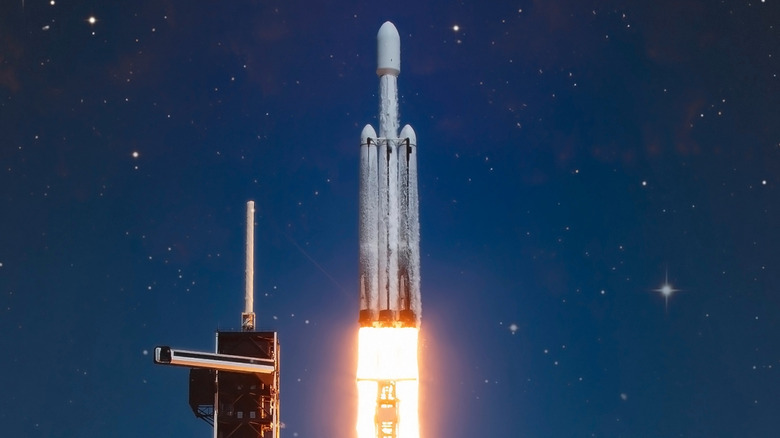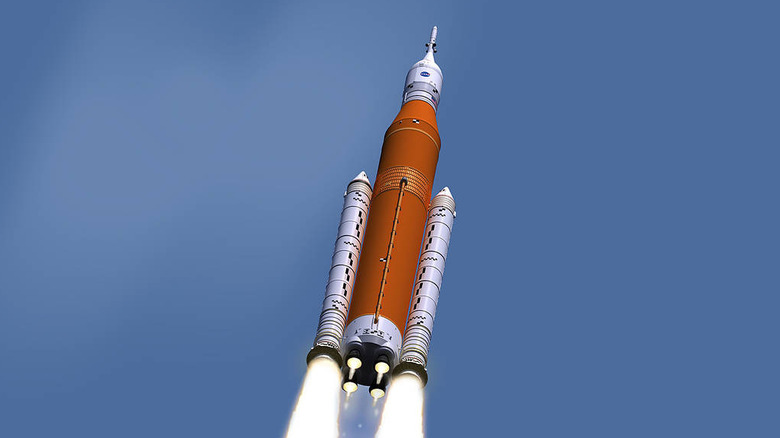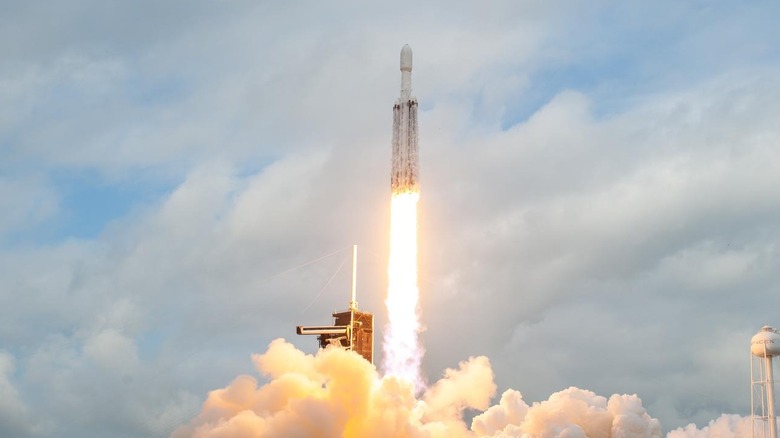How Much Does It Cost To Go To Space? Here's What NASA Pays
Humanity has come a long way since the first satellite was launched into low-Earth orbit. Within a matter of decades, man set foot on the moon, built a space station, developed reusable rockets, and began a trend of space joyrides for billionaires. But the cost of launching stuff into orbit, and beyond, is not an affordable journey, even though the costs have broadly come down. According to an estimate by NASA's Ames Research Center, the cost of launching objects into low-Earth orbit has come down by "a factor of 20."
Citing costs advertised by commercial partners such as SpaceX for its Falcon 9 rocket, the cost has come down to $2,720 per kilogram. That is a substantial reduction compared to NASA's space shuttle, which put the launch cost at $54,500 per kilogram. The cost dynamics change when human missions come into the picture, as astronaut vehicles mounted on the rockets dramatically reduce their payload capacity.
Assuming an average mass of a light mission involving the Falcon 9 rocket and SpaceX Dragon capsule, the net launch cost to the International Space Station is roughly $140 million, which translates to a per-unit-mass hit worth $23,300 for each kilogram of cargo. "The shuttle payload to ISS is less than to LEO, 16,050 kg, so its cost is also higher at $93,400/kg," adds the space agency. Overall, NASA estimates that the net cost of space station launch missions has come down by a factor of four.
A fresh perspective
The aforementioned figures came out in 2018, and since then, we have seen the market dynamics shift drastically. More advanced rockets have arrived on the scene, the competition dynamics have heated up, and the success rate with reusable rockets has toned down the launch costs. But at the same time, the rising cost of materials and related variables has also resulted in a surge.
As per an estimate presented by Harry Jones, an engineer at the Ames Research Center, the per kilogram cost of putting objects into low-Earth orbit has come down to $2,940 per kilogram on a shuttle launch. Those figures are based on missions carried out by the Falcon 9 rocket. For missions carried out by the larger Falcon Heavy rocket with increased cargo space, the expenditure trickles down to $1,520 per kilogram.
The targets set for the future are even more ambitious, and one of the biggest beneficiaries will be NASA. SpaceX chief, Elon Musk, has claimed that the Starship will bring "several orders of magnitude improvement in $/kg to orbit & beyond," and could eventually lower the costs to as little as $10 per kilogram of launch cargo.
NASA has pinned its hopes on the Starship for its ambitious Artemis mission, which is eying not just a return to the moon, but also the first human mission to Mars. On the other hand, the space agency will benefit from the lowered costs as SpaceX embarks on its mission to retire the space station.
So, launch missions are cheaper? It's complicated
Over the past couple of decades, the space industry has observed a trend where private players are now being contracted for launching internet satellites into space, shuttling astronauts to the space station, and planning a return trip to the moon. The costs of hauling stuff into space, adjusted for inflation, have come down compared to its early days. But it has also kept rising lately. According to a research paper that will appear in the July 2025 edition of the Acta Astronautica journal, between 1996 and 2024, the launch cost for NASA has gone up by 2.8 % on a yearly basis.
Now, before we dig into the specifics, the paper discussed above only offers an empirical cost perspective for NASA, and not the general trend in the private space industry. The paper notes that there is "no evidence of a shift in cost trend even after the introduction of a new provider." Moreover, it highlights that despite the growing competition from private service providers, the cost-efficient benefits are not quite showing their expected impact on NASA's ledger.
According to an audit of resupply missions to the space station by NASA's Office of Inspector General, NASA was paying $400 million in increased costs for resupply missions to the space station, despite sending less cargo worth six tons. "In addition, per-kilogram pricing of upmass capability for CRS-2 is estimated to increase by 14 percent compared to CRS-1," says the report. For example, between 2016 and 2025, missions flying aboard SpaceX Falcon 9 rockets will only see a hike from $114 million to $134 million.


